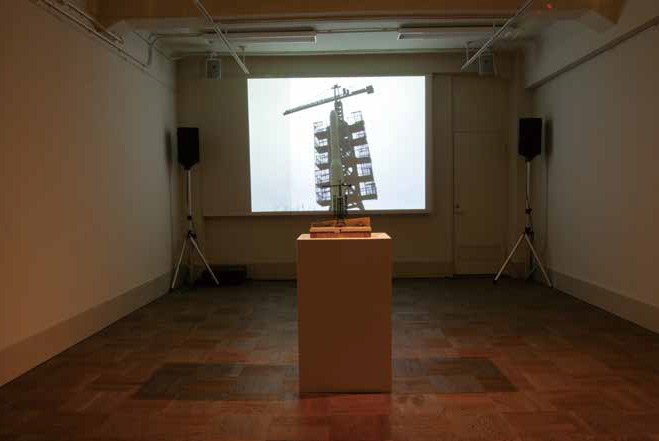- Home
- News
- Art Works
- PACHINKO TRIOGY ー777ー
- PYRMID ーYin Yang versionー
- FEVER
- MASS+GAME
- PYRAMID
- A VIVID MORNING ON THE NORTH SIDE
- MIKARA DETA SABI
- Paper model-type missile
- Plastic model-type missile
- LOVE IS STRONGER THAN DEATH
- LOVE&DEATH
- SCARY STORY
- MIKARA DETA SABI ーTERRITORYー
- MASS GAME —The Wasp—
- BLOOD
- MIMI-NASHI-HOICHI
- War Accessory
- DURST
- FLOWER POT —Destruction and Rebirth—
- Labor Mobilization
- DURST ZWEITE ーTERRITORYー
- DURST DRITTE —TOKYO WHITE CUBE—
- ANTI-GRAVITY
- Collaboration with Chinen Daichi
- Untitled
- Projects
- Biography
- Book
- Studio
A VIVID MORNING ON THE NORTH SIDE

A VIVID MORNING ON THE NORTH SIDE
2011
Model (mixed media), video (original version video 4'04")
W400 D300 H500 mm
Exhibition
2011
A VIVID MORNING ON THE NORTH SIDE
Gozoen Building, Tottori, Japan


“Things that come from the shore”
Try and imagine “things that come from the shore.” Today we know very well that the sea, even though it is normally calm, sometimes reveals its destructive side and assaults us humans. For the people on the coast of the Sea of Japan, the threat of a tsunami may be less acute. When looking across the sea to the land that’s on the other side, however, there is another kind of threat that we cannot help feeling.
For example, there is that image of missile launches surrounded by billowing smoke. Positive associations of promising space explorations and reliable sciences no longer work. These are weapons that are being shot toward us from a suspicious nearby country,and a menace that may turn our everyday life upside down just like a tsunami. Fujiwara explains that he conceived this image during his experience of actually standing on the shore in Tottori. His works are deeply and directly connected to his own current position as an artist, and to the relationship between the Sea of Japan and the Korean Peninsula.
While addressing real and serious issues, Fujiwara’s works are at the same time charged with a unique sense of humor. Take the soft papier maché missile for example, which projects a double image of a toy and a weapon. By way of such techniques as dissimilation effect and distortion of perception, “things that come from the shore” are represented as a subject of art.
Osaki Shinichiro, Chief Curator at Tottori Prefectural Museum*
* Currently the museum's director
Translated by Andreas Stuhlmann
「渚から来るもの」
「 渚から来るもの」を想像すること。ふだん穏やかな海も時に壊滅的な様相を呈して人々に襲いかかることを今や私たちは思い知った。日本海に面して生活する私たちにとって津波の恐怖はさほど切実ではないかもしれない。しかし海の彼方に大陸を臨む時、私たちは別の不安を禁じえない。
例えば噴煙とともに発射されるミサイルのイメージ。もはや宇宙開発、科学への信頼といった幸福な連想は働かない。それは胡乱な隣国から私たちめがけて射ち込まれる兵器であり、津波同様に私たちの日常を一変させる脅威である。藤原はこのイメージを実際に鳥取の海岸にたたずんだ体験から着想したという。藤原の作品は今、ここという作家の位置、端的に日本海と朝鮮半島の関係と深く結びついている。
現実的で深刻な問題を扱いながらも、藤原の作品は独特のユーモアをたたえている。ふにゃふにゃの張りぼてミサイル。玩具と破壊兵器のダブルイメージ。異化効果や認識のゆらぎといった手法を介して「渚から来るもの」は美術の主題として表象される。
尾崎信一郎(おさき・しんいちろう 鳥取県立博物館副館長*)
*
現・鳥取県立博物館館長
